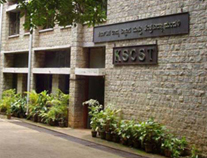|
The Journey of creation of State
Science and Technology Councils in India
Science and Technology (S&T) have long been
recognized as key pillars of economic progress, industrial growth, and
social development. In India, the promotion of scientific research and
technological advancement has been central to national policies,
ensuring that innovation plays a transformative role in addressing
societal challenges. While the central government has historically
played a prominent role in shaping the country's S&T landscape, it has
been increasingly acknowledged that state-level initiatives are
crucial for fostering region-specific innovation, localized research,
and grassroots technological applications.
The idea of State Science and Technology
Councils emerged from this need to decentralize scientific governance,
ensuring that each state can develop its own policies, research
priorities, and innovation ecosystem in alignment with its unique
socio-economic and geographical characteristics.
The initiative to establish State Councils for
Science & Technology was first taken in 1971, which marked the
beginning of a structured approach to regional scientific development.
A more formal push for establishing State S&T Councils came in the
1980s when the Department of Science and Technology (DST), Government
of India, launched the State Science & Technology Programme.
This initiative aimed at strengthening
scientific research at the state level, promoting collaboration
between academia, industry, and government, and ensuring that
technological solutions were tailored to regional needs.
State Science & Technology Councils are
established in all states and union territories. They have evolved
into multi-functional entities, driving state-specific research,
technology transfer, and capacity building. These councils also manage
science centers, science cities, patent information centers, and
planetariums. Furthermore, they are often responsible for the
establishment and management of autonomous institutions, as well as
various specific projects and programs designed to benefit the state.
Most of the states have the councils as the
major constituent of their State Department of Science & Technology.
The following table presents a list of these
councils, organized by their year of establishment, from earliest to
most recent.
|





